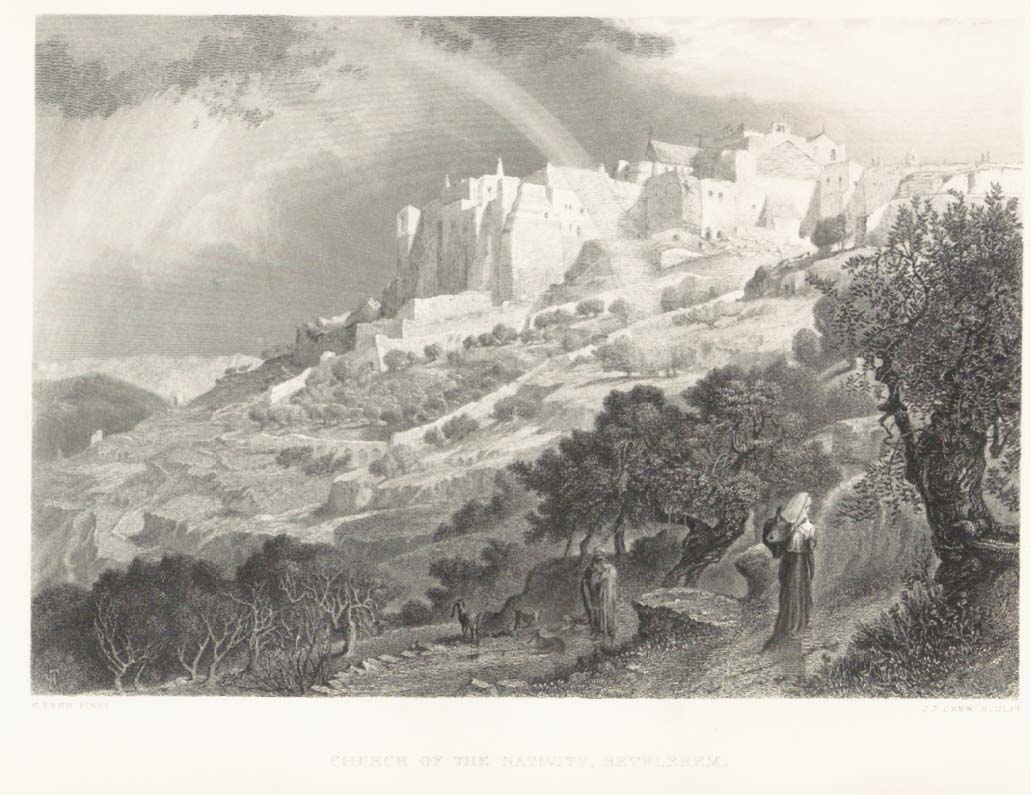
. CHRISTIANITY AND BYZANTIUM .
Early Christianity (see Gustav Dore images)

In Roman times, Bethlehem was a small fortress town

In the New Testament, 3 Wise Men (Magi) came from far lands guided by the Star of Bethlehem
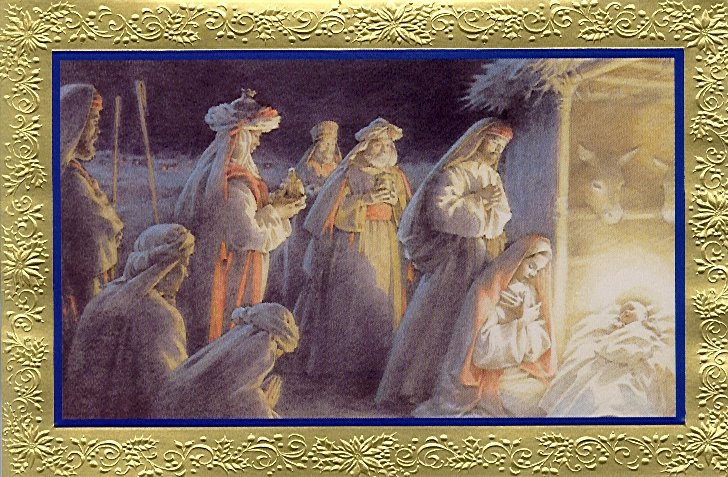
Christmas Day- Jesus' birth in the nativity outside Bethlehem
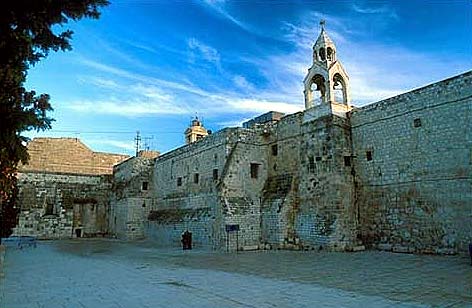
The Church of the Nativity in Bethlehem, built on the traditional site of the manger in which Jesus was born
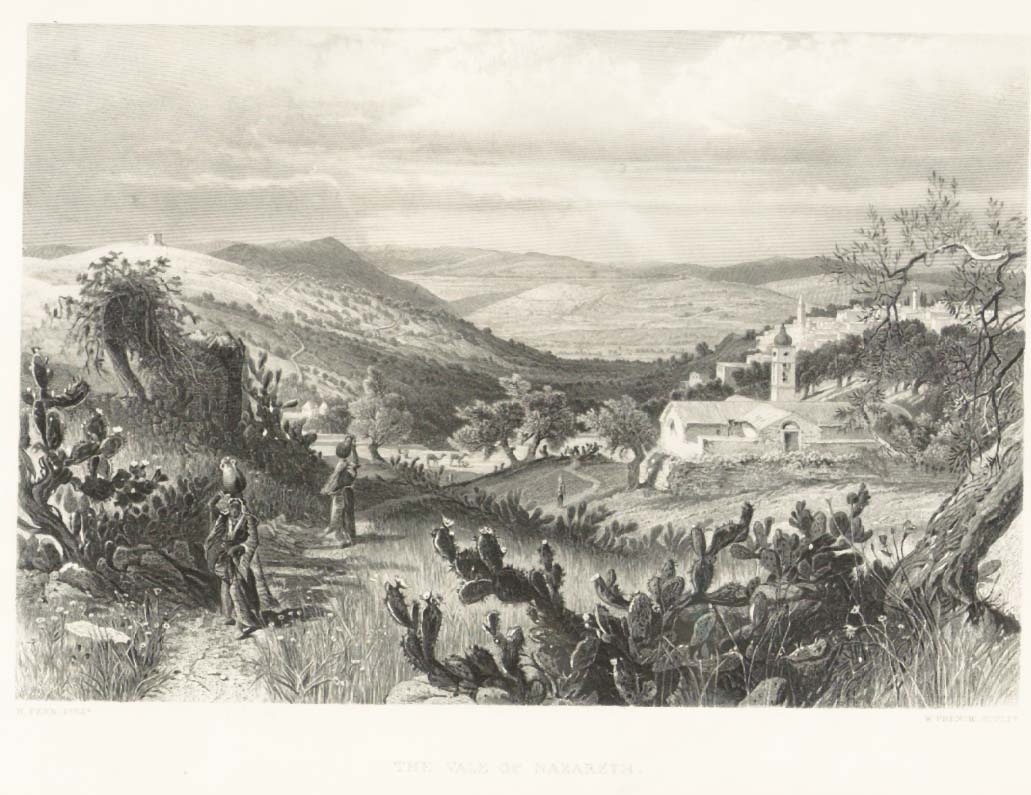
The city of Nazareth in Roman Judea, city where Jesus grew up, becoming a carpenter
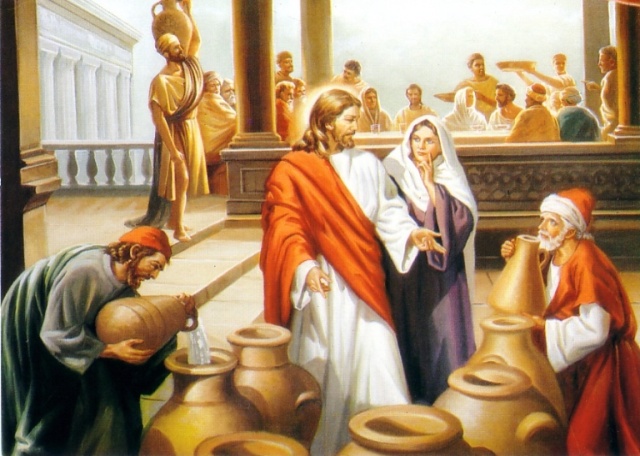
Jesus' first public ministry, where at the request of his mother, he turned water into wine at the wedding feast of Cana
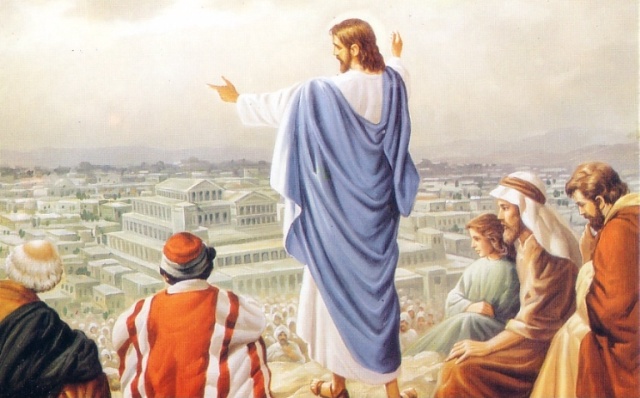
The most famous teaching of Christ: The Sermon on the Mount at Jerusalem, 'Seek the Kingdom of God'
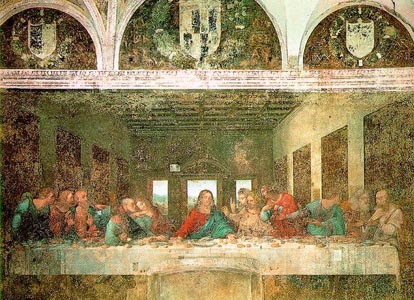
The Last Supper, where tradition holds Jesus gave bread and wine to the apostles
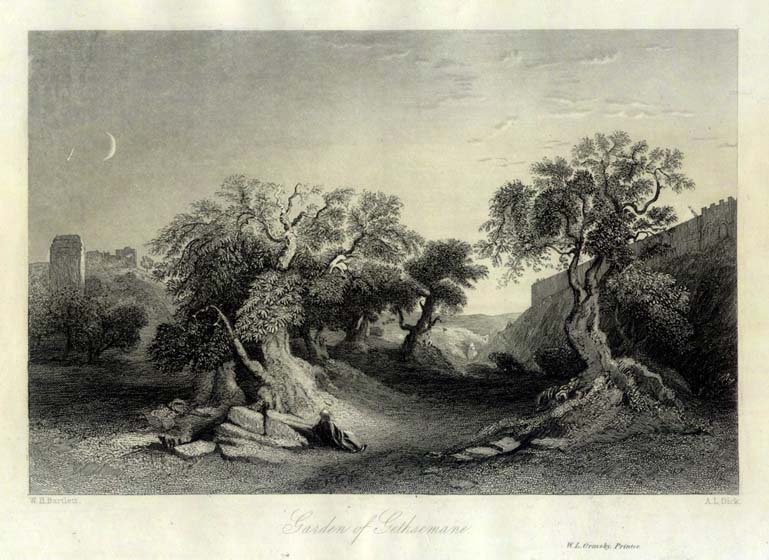
Israel- the Garden of Gethsemane- where Jesus was arrested by the Roman after being betrayed by Judas, one of the apostles

Christ brought to trial before the Roman governor Pilate, who will wash his hands of the situation

Passion of the Christ: Jesus carrying the cross on the 'Via Dolorosa' in Jerusalem to Mt. Golgotha (Calvary)
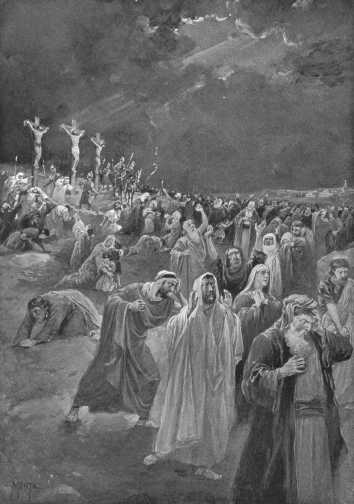
Good Friday. When Jesus was crucified
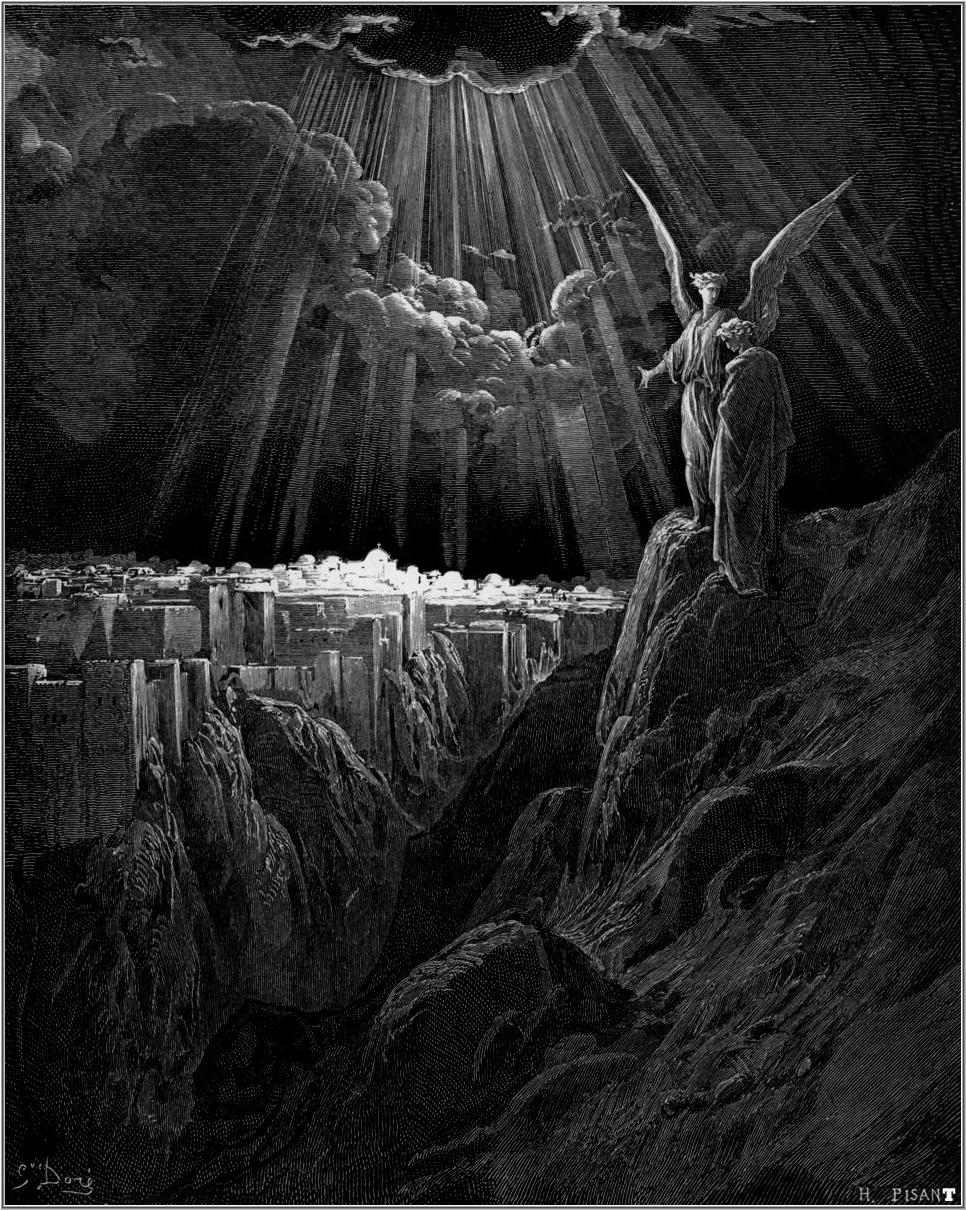
Jerusalem after the Crusifixion
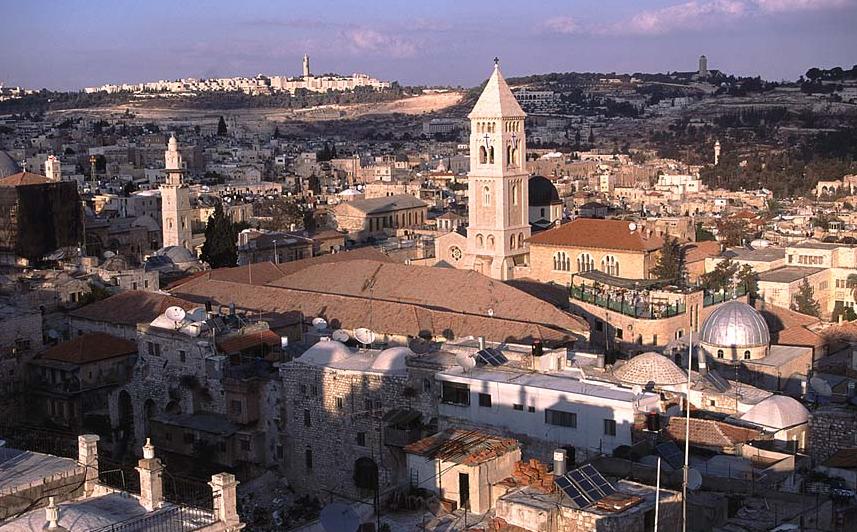
The Church of the Holy Sepulchure in modern Jerusalem- built on the traditional site of the old cave in which Jesus was buried
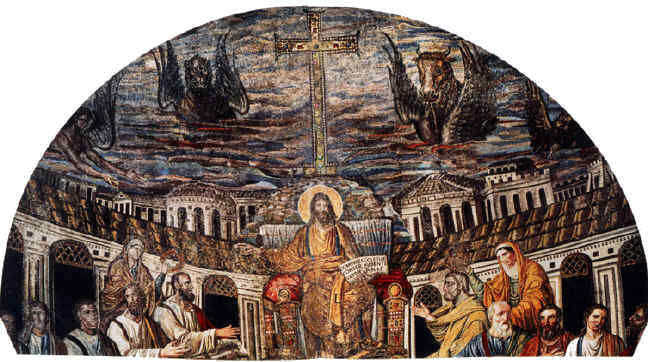
Fresco from inside the church, with Jesus enthroned- and example of early Christian art
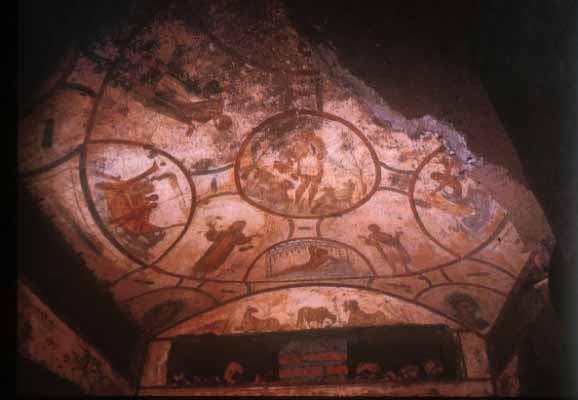
When Christianity was illegal in the Roman Empire, Christians gathered and prayed in the catacombs underneath
the city. They also painted images on the ceilings and walls of the catacombs
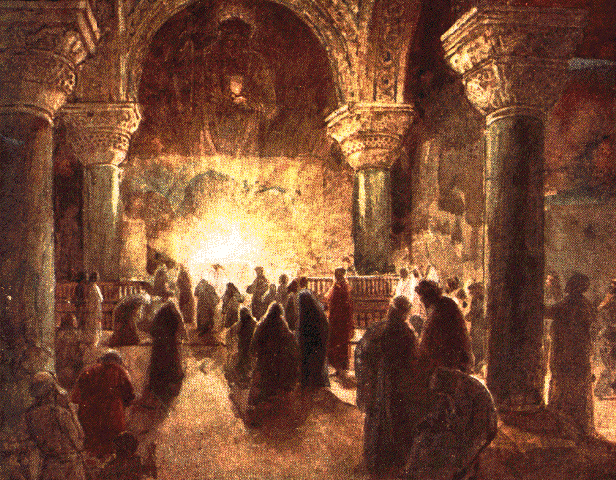
Christians gather in Rome for mass, indentifying themselves by drawing the 'fish' sign in the ground

Rome's oldest church: the Basilica of Constantine from the 300's- We see use of the Roman Arch
Constantine filled Rome with churches to celebrate the Empire's conversion to Christianity

The basilica of St. John Lateran (320) in Rome built during the reign of Constantine

As part of an anti-Christian action in 64, Peter was martyred in Rome, crucified upsidown according to Origen because he
felt himself unworthy of dying in the same way as Jesus, in 64. His tomb on the Mons Vaticanus next to the Circus Maximus became the site of
St. Peter's basilica, raised in 325 after Christianity was made legal. The old basilica was torn down a thousand years later in favor of today's
monumental construction: New St. Peter's- also known as The Vatican (see Renaissance churches later on)

The Basilica of San Lorenzo in Milan (325)- Constantine had churches built in the large cities of the Empire

Emperor Constantine built this church for Costanza (350) his daughter who died young
It is said he went here every day to seek comfort for her death

San Clemente in Rome (392) one of the masterpieces of early Christian church building

Inside of San Clemente, notice the floor pattern and the columns typical of early churches

Rome- Santa Maria Maggiore built in 432 in Rome

The church of St. John at Ephesus built in 450, now a ruin
BYZANTIUM: MAINTAINING THE CONTINUITY OF EMPIRE
Churches built (mostly in Orthodox style) after the Fall of Rome in the West

In 532 Justinian built in Constantinople the greatest building in the world, The Church of Holy Wisdom (Hagia Sophia)

Like all Constantinople and Byzantium, this church has been converted to Islam, here is what it looks like today

The church of St. Vitale in Ravenna, Italy, built in Orthodox style, 546

Masterpiece inside San Vitale: Mosaic of Emperor Justinian

Another mosiac with Justinian's beloved wife Isadora

Angels in Heaven from another Ravenna Mosaic

St. Catherine's Monestary, built at the foot of Mt. Sinai (550) and still there today
PAINTING (ICONS)
![]()
Most medieval art in painting was 2 dimensionial, and of course, had Christian themes.
This is the Annunciation (when an angel told Mary that she was pregnant by a divine hand)
![]()
The icon of Mary with Jesus inside her
![]()
The Presentation of Jesus at the Temple of Solomon in Jerusalem, as an infant
![]()
Most famous of all Russian icons, Our Lady of Vladimir, Mary with Jesus
![]()
The famous icon of Jesus with a Bible (showing its holiness and its addition of the New Testament)
![]()
The Crucifixion icon
![]()
Icon of the Transfiguration
![]()
The icon of the death of Mary in the later decades, being welcomed into heaven by Jesus
![]()
![]()
St. Peter and Paul spread Christianity throughout the Roman world,
and Mary (right) interceding with God on peoples' behalf
![]()
![]()
The angel Gabriel (left) and St. Michael the Archangel, a Christian would
pray to St. Michael to help them battle the forces of evil
![]()
Another powerful angel, St. George fighting the dragon (serpent, a symbol of Satan)
![]()
The icon of St. Nicholas, who loved children
![]()
Icon of the Divine Fatherhood, appearing with the white dove a symbol of God
![]()
The icon of the Trinity, after which Trinity, Florida was named
Site Design: David Tamm